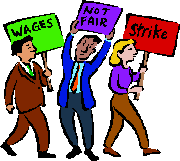April 28, 2009
By Carl Hulse
Senator Arlen Specter of Pennsylvania said on Tuesday he would switch to the Democratic party, potentially presenting Democrats with a possible 60th vote and the power to break Senate filibusters as they try to advance the Obama administration’s new agenda.
“Since my election in 1980, as part of the Reagan Big Tent, the Republican Party has moved far to the right. Last year, more than 200,000 Republicans in Pennsylvania changed their registration to
become Democrats,” Mr. Specter said in a statement. “I now find my political philosophy more in line
with Democrats than Republicans.”
Mr. Specter, the long-time Republican party maverick, faced a difficult re-election next year, against conservative opponent Pat Toomey, the former Pennsylvania representative.
If Al Franken prevails in his ongoing court case in Minnesota and Mr. Specter begins caucusing with Democrats, Democrats would have 60 votes and the ability to deny Republicans the chance to stall legislation. Mr. Specter was one of only three Republicans to support President Obama’s economic recovery legislation.
“My change in party affiliation does not mean that I will be a party-line voter any more for the Democrats that I have been for the Republicans,” he said. “Unlike Senator Jeffords’ switch which changed party control, I will not be an automatic 60th vote for cloture.”
Democratic leaders expressed their enthusiasm. President Obama was handed a note from an aide at 10:25 a.m. on Tuesday during his daily economic briefing. The note, according to a senior administration official, said: “Specter is announcing he is changing parties.”
Seven minutes later, Mr. Obama reached Mr. Specter by telephone. In a brief conversation, the president said: “You have my full support,” according to the official who heard the phone call. The president added that we are, “thrilled to have you.”
“We will welcome him with open arms,” said Senator Debbie Stabenow, Democrat of Michigan.





